In today's digital-first marketplace, every image is an opportunity to connect, engage, and convert. Yet many businesses still underestimate the power of professional event photography, viewing it as a luxury rather than a crucial marketing investment. Let's explore how quality event photography drives real business results and provides lasting value across your marketing ecosystem.
Essential Types of Event Photography: Capturing Every Moment That Matters
(Icon: Camera)
[Recommended Visual: Grid layout showing different types of event photos - candid interactions, staged group shots, detail shots, and wide venue shots]
Professional event photography requires a strategic mix of different shot types to tell your complete brand story and maximize marketing potential. From capturing the energy of spontaneous moments to creating polished promotional assets, each type of photograph serves a specific purpose in your marketing toolkit. Understanding these different types helps you brief your photographer effectively and ensure you get the most value from your investment.
Essential Shot Types:
- Candid Interaction Shots: Capture authentic engagement and energy
- Staged Group Photos: Perfect for team building and professional profiles
- Environmental Shots: Showcase your venue and event atmosphere
- Detail/Product Shots: Highlight specific features or offerings
- Behind-the-Scenes: Share authentic brand moments
- Wide Angle Coverage: Document full venue and crowd size
The Digital Currency of Visual Content
(Icon: Camera)
[Recommended Visual: Infographic showing social media engagement statistics for posts with professional photos vs. amateur photos]
The modern digital landscape has transformed how businesses communicate with their audiences, making visual content more valuable than ever before. In a world where attention spans are shrinking and competition for eyeballs is fierce, professional photography has become the cornerstone of effective digital marketing strategies.
Key Insights:
- 65% of people are visual learners
- Posts with professional images receive 2.3x more engagement
- Visual content is processed 60,000 times faster than text
Beyond the Event: Multiple Marketing Touchpoints
(Icon: Share)
[Recommended Visual: Flow chart showing how one event photo can be used across different marketing channels]
Professional event photography isn't just about capturing moments; it's about creating a versatile library of authentic content that can be deployed across multiple channels. Each photograph becomes a valuable asset that can be repurposed and optimized for different platforms and audiences, maximizing your return on investment.
Marketing Applications:
- Social Media Content Calendar
- Website Testimonials and Case Studies
- Email Marketing Campaigns
- Press Releases and Media Coverage
- Digital and Print Advertising
- Employee Recruitment Materials
The Social Media Amplification Effect
(Icon: Trending-Up)
[Recommended Visual: Side-by-side comparison of social media posts using professional vs. amateur event photos, with engagement metrics]
Social media platforms have become increasingly visual-first, with algorithms favoring high-quality images that generate engagement. The difference between professional and amateur photography on these platforms isn't just aesthetic – it's quantifiable in terms of reach, engagement, and conversion rates.
Platform Performance:
- LinkedIn posts with professional images get 98% more comments
- Instagram business posts with professional photography see 37% higher engagement
- Twitter shares increase by 150% when posts include quality images
- Facebook posts with professional photos receive 3.2x more engagement
Calculating the Real ROI
(Icon: Calculator)
[Recommended Visual: ROI calculator graphic showing investment vs. returns across different marketing channels]
Understanding the return on investment for professional event photography requires looking beyond the immediate event coverage to consider the long-term value creation across your marketing ecosystem. When properly leveraged, professional event photography can significantly reduce your overall marketing costs while improving results.
Investment versus Returns:
- Professional photographer fees
- Editing and delivery costs
- Image licensing and rights
- Marketing content creation savings
- Increased social media engagement
- Higher website conversion rates
Maximizing Your Photography Investment: A Strategic Approach
(Icon: Target)
[Recommended Visual: Comprehensive infographic showing the lifecycle of event photography from planning to long-term usage.]
Professional event photography is both an art and a strategic business investment that requires careful planning and systematic implementation to maximize its value. When approached with a clear strategy, your event photography can become a powerful engine for content creation, cost savings, and long-term brand building that continues delivering returns long after the event has ended.
Strategic Implementation:
- Develop comprehensive shot lists aligned with marketing goals and brand guidelines
- Create efficient workflows for content distribution and tracking
- Build an organized system for archiving and accessing your photo library
- Establish clear metrics for measuring impact across different marketing channels
Ready to Transform Your Event Photography Strategy?
Professional event photography is more than just documenting moments—it's creating valuable marketing assets that drive business results. The initial investment pays dividends across your entire marketing ecosystem, from social media engagement to brand credibility.
Hey future models! Looking to submit your digitals to agencies but feeling lost in the sauce? We've got you covered with the ultimate guide to creating modeling digitals that'll make agents stop scrolling!
First Things First: What Are Modeling Digitals?
Think of digitals as your modeling passport - they're the raw, unfiltered look at your potential that agencies use to make their first decisions. In 2025, these photos are more crucial than ever, serving as your digital first impression in an industry that moves at lightning speed.
Full-Body Shot (Front)
The front-facing full body shot is your power pose, showing agencies your natural stance and proportions in their purest form. This fundamental shot needs to capture your full height and body composition while maintaining a relaxed, authentic presence that agencies can immediately evaluate.
Quick Tips
- Stand straight, relaxed shoulders
- Arms naturally at your sides
- Feet hip-width apart
- Direct gaze at the camera
- Natural, neutral expression



Full-Body Shot (Profile)
Your profile shot reveals crucial angles and lines that agencies use to assess your potential for different types of modeling work. This shot is particularly important for fashion and runway considerations, as it showcases your natural posture and body alignment from a different perspective.
Quick Tips
- Stand parallel to the camera
- Keep posture straight but natural
- Arms relaxed at sides
- Look straight ahead
- Show clear body silhouette



Full-Body Shot (¾ View)
The ¾ view combines the best of both worlds, offering agencies a look at how you photograph at angles while showing off your features and proportions. This perspective is often used in fashion editorials and commercial work, making it a critical part of your digital package.
Quick Tips
- Angle body slightly
- Keep shoulders relaxed
- Natural arm position
- Look directly at camera
- Maintain neutral expression



Close-Up Beauty Shot
Your beauty shot is all about showcasing your features in their most natural state, allowing agencies to see your bone structure and unique characteristics. This shot needs to be completely clean and clear, showing your face without any enhancements or angles that might distort your true features.
Quick Tips
- Direct eye contact
- Minimal/no makeup
- Hair pulled back
- Natural, relaxed expression
- Show clear facial features



Ready to Take Your First Step into Modeling?
Book your modeling digital session today and get the professional edge you need to stand out in 2025's competitive market. Contact us now to schedule your shoot or learn more about our modeling photography services. Let's create the perfect digitals to launch your modeling career!
Our Professional Digital Package Includes:
- Pre-shoot consultation to discuss agency requirements
- Expert guidance on posing and expression
- All essential shots required by agencies
- Natural lighting optimization
- High-resolution digital files in agency-preferred formats
- Quick turnaround time for submissions
- Professional shooting environment
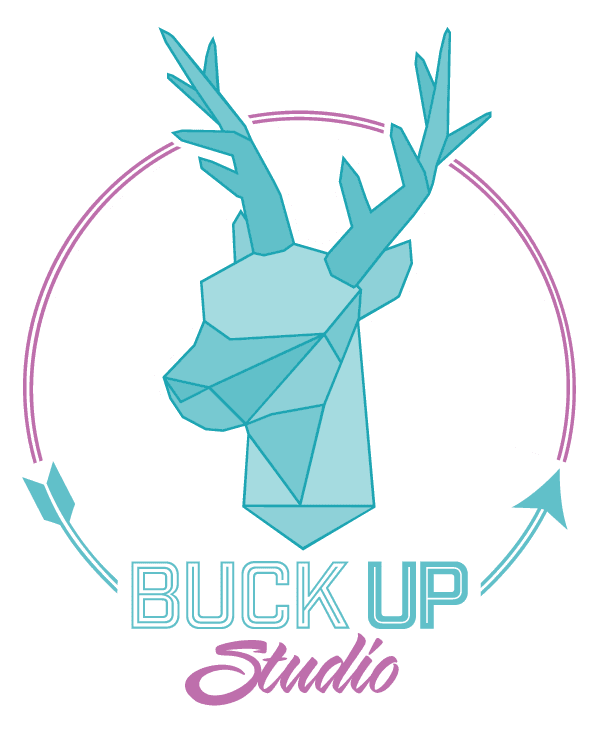
Online forms are the gateway to customer conversions, yet 67% of visitors abandon them before hitting submit. Whether you're collecting leads, processing payments, or gathering customer feedback, a poorly designed form can cost your business thousands of potential customers.
In fact, the difference between a high-converting form and an abandoned one often comes down to specific design elements and user experience choices. This comprehensive guide explores proven strategies for creating forms that actually convert, from essential design principles to advanced analytics and optimization techniques.
We'll walk through common form design mistakes, conversion-killing factors, and practical solutions to help you build forms that transform casual visitors into valuable leads. By the end of this guide, you'll have actionable steps to create forms that not only look professional but consistently drive results.
Why Most Online Forms Fail to Convert
Creating effective online forms goes beyond basic functionality. Research shows that forms with poor design can lead to abandonment rates as high as 78%.
The foundation of form failure often lies in basic design flaws. A single-column layout proves most effective, as multiple columns interrupt the natural flow and confuse users. Furthermore, placeholder text, though common, causes significant usability problems and should be avoided. Notably, studies reveal that reducing form fields from 11 to 4 increased conversions by 120%.
Common Form Pitfalls
- Complex Multimedia Elements: While they may enhance visual appeal, they often introduce friction and learning curves for users.
- Unclear Value Propositions: 41.7% of conversion failures are due to unclear messaging.
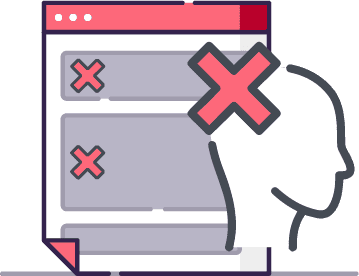
Hidden conversion killers
Several subtle factors silently sabotage form performance. Complex multimedia elements, though visually appealing, often create additional friction and learning curves for users. Meanwhile, poorly organized content forces visitors to hunt for call-to-action buttons, leading many to abandon the process entirely.
Gutenberg Principle
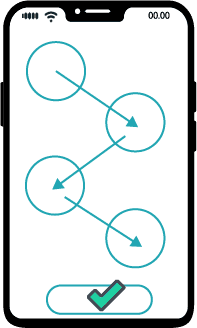
- Optimize forms for mobile devices to maintain user engagement and completion rates.
- Ensuring a seamless mobile experience is crucial for capturing a wider audience.
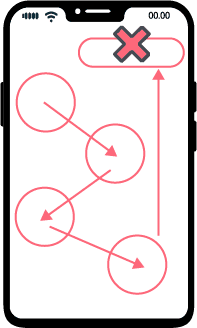
- Forms that lack mobile responsiveness risk losing nearly 50% of potential submissions.
- Poorly Organized Content: Visitors struggle to locate call-to-action buttons, increasing abandonment rates.

The psychology of form abandonment
Understanding why users abandon forms requires diving into their psychological barriers. The risk-reward assessment plays a crucial role - visitors constantly evaluate if sharing their personal information is worth the promised value. Consequently, each additional form field increases perceived risk and decreases conversion probability.
Trust signals significantly impact completion rates. Forms lacking clear security indicators or displaying too many fields trigger anxiety about data privacy. Specifically, studies show that asking for unnecessary information frustrates users and can deter them before they even start.
To combat these issues, consider these critical form elements:
- Clear progress indicators showing completion status
- Immediate error validation without modal popups
- Minimal required fields with transparent explanations
- Mobile-first design principles
The relationship between form complexity and user psychology remains clear: the more effort required, the higher the abandonment rate. By addressing both technical and psychological barriers, forms can maintain their effectiveness without sacrificing valuable data collection.
Essential Elements of High-Converting Forms
Building high-converting online forms requires three essential components that work together to create a seamless user experience.
The purpose of a form must be immediately apparent to visitors. Rather than using generic submit buttons, action-oriented labels like "Get your free book" create more compelling calls-to-action. Moreover, informing users about completion time upfront increases conversion rates, as shorter perceived time commitments lead to higher submission rates.
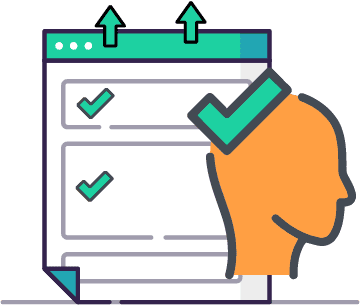

Trust indicators and social proof
Security concerns drive 17% of form abandonments. Therefore, incorporating trust elements becomes crucial for conversion success. A well-designed form should include:
- SSL certificates and secure checkout badges
- Payment method trust indicators
- Money-back guarantee or free shipping badges
- Customer testimonials and reviews
- Third-party endorsements from industry experts
Research shows that 97% of consumers factor online reviews into their decisions. Primarily, trust badges serve two vital functions: they reassure visitors about data security and align your brand with established names like Visa or PayPal.
Mobile-first design principles
Since mobile traffic now exceeds desktop usage, optimizing forms for smaller screens is essential. A mobile-first approach focuses on creating forms that work flawlessly across all devices. This includes:
Single-column layouts perform better on mobile devices, as scrolling is preferable to horizontal movement. Top-aligned labels help fit content properly on any screen size, while appropriate HTML input modes ensure the right keyboard appears for each field type.
The foundational rule remains consistent - shorter is better. Studies by Baymard Institute reveal that most online services could reduce their default field count by 20-60%. Generally, forms should display only essential fields, with optional ones clearly marked.
For optimal mobile performance, ensure touch targets are finger-friendly and provide clear feedback when users complete actions. Overall, accessibility isn't just about compliance - a form with good accessibility benefits all users, leading to higher conversion rates.
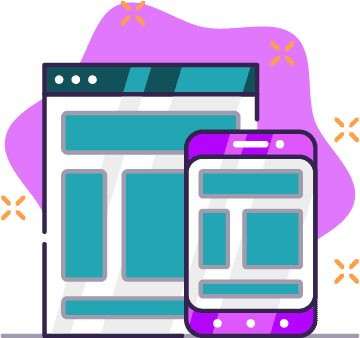
Form Field Best Practices
The Art of Form Simplicity: Less is More
When it comes to form design, the old saying "less is more" couldn't be more accurate. Research shows that reducing form fields 3 to 4 fields led to a remarkable increase in conversion rates. This dramatic improvement highlights a crucial principle: every additional field you add creates another potential point of abandonment.
Think of each form field as a small hurdle your users must jump over. The more hurdles you place in their path, the higher the likelihood they'll give up before reaching the finish line. Additionally, studies show conversion rates drop by 2.5% for every field added beyond 3 fields.
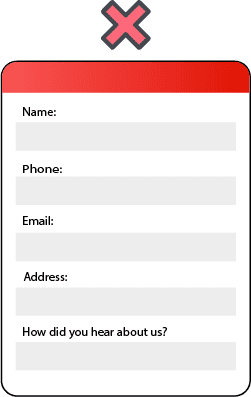
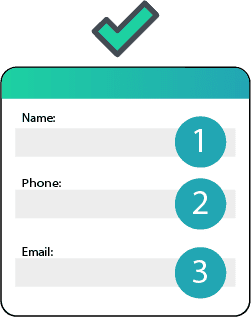
For instance, while knowing a user's job title might be valuable for your marketing team, asking for it during initial signup could deter potential conversions. Consider whether that information could be gathered through post-registration surveys or profile completion prompts instead.
Smart Field Selection Before adding any field to your form, ask yourself:
- Is this information essential right now?
- Can this data be collected later in the customer journey?
- Does this field directly contribute to your form's primary goal?
For optional fields, including the word "optional" next to the field descriptor reduces cognitive load. This approach particularly helps in forms where most fields are required, as it eliminates the need for users to deduce field requirements through comparison.
Real-Time validation techniques
Marking required fields demands careful consideration. Studies indicate users rarely read instructions at the top of forms. Accordingly, explicitly marking each required field proves more effective than general statements about field requirements. Validation should occur as users type, with error messages appearing next to the relevant fields. Error messages must be visually distinct, explain issues clearly, and provide specific correction guidance.
To reduce friction,The traditional approach of using red asterisks has become standard practice, primarily because users understand this convention. However, the asterisk placement matters - positioning it beside the field label helps users quickly scan required fields, enabling users to process information faster.
Poor implementation

Good implementation

31% higher satisfaction ratings
Smart Form Testing Strategies
Systematic testing forms the backbone of successful form optimization. A/B testing, alternatively known as split testing, provides concrete data about which form elements drive better conversion rates.
A/B testing fundamentals
A/B testing involves creating variations of form elements and measuring their impact on user behavior. This methodical approach eliminates guesswork by collecting real-world data about user interactions. Research indicates that organizations missing key testing metrics fail to deliver on 56% of their performance goals.
The success of A/B testing relies on proper sample size determination. Testing requires consideration of statistical power, expected effect size, and data variability. Primarily, this ensures that observed differences between form variations represent genuine user preferences rather than random fluctuations.


Key metrics to track
Form analytics reveal crucial insights about user behavior and conversion patterns. Essential metrics for form optimization include:
- Conversion rate: Measures the percentage of users completing desired actions
- Click-through rate (CTR): Tracks engagement with specific form elements
- Time on page: Indicates user engagement levels
- Bounce rate: Identifies potential form abandonment issues
Indeed, automating measurements proves crucial for optimizing test performance, as it enables teams to gather repeatable test data and scale coverage alongside product complexity.
Essential Form Testing Tools & Platforms
Choosing the right testing tools can make or break your form optimization efforts. Organizations that implement comprehensive testing strategies see a 44% improvement in form performance and reliability.
Here's what matters most:
- Cross-browser and cross-platform compatibility to ensure forms work everywhere
- Detailed analytics and reporting capabilities for data-driven decisions
- Integration with existing CI/CD pipelines for seamless deployment
- Support for both client and server-side validation testing

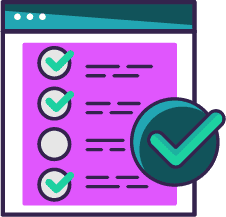

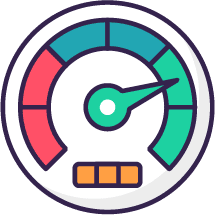

Top Testing Platforms to Consider
- Buck Up Studio: Comprehensive form optimization and testing, with specialized focus on UX/UI enhancements
- Hotjar: Excellent for heat mapping and user recording analysis
- Optimizely: Enterprise-level testing with advanced segmentation
- VWO: Specialized in form analytics and funnel testing
Best Practices for Implementation:
- Start with standardized testing processes across all forms
- Monitor both immediate and long-term results
- Focus on key metrics like completion rates and error frequency
- Regularly iterate based on test findings
Remember: The most effective testing strategies combine multiple tools to capture both quantitative data (completion rates, error frequencies) and qualitative insights (user behavior patterns, friction points).
Mastering Form Analytics: Turn Data into Conversions
Companies implementing comprehensive form analytics see a staggering 451% increase in qualified leads. Focus on these key metrics: abandonment rate, field completion time, and successful submission rate to understand your form's performance.
Research highlights the main reasons users abandon forms site security concerns, while 37% leave when asked for phone numbers. Armed with this knowledge, optimization becomes straightforward.
Optimization Quick Wins
- Remove unnecessary fields (especially phone numbers)
- Add visible trust signals and optimize for mobile
- Monitor and fix fields with high error rates
Through comprehensive form analytics, businesses can identify patterns in user behavior and develop targeted improvements. Field-level analytics reveal which questions cause the most friction, enabling organizations to streamline their forms effectively. Certainly, this data-driven approach to form optimization proves essential for maintaining competitive advantage in digital landscapes.
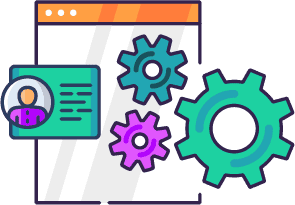
Key Takeaways
1.
Building high-converting online forms requires careful attention to design, psychology, and user experience. Data shows that optimized forms can achieve up to 120% higher conversion rates through thoughtful field reduction and strategic implementation of trust indicators.
2.
Success stems from three key areas: clear value propositions that immediately communicate benefits, robust testing strategies that validate design choices, and comprehensive analytics that identify optimization opportunities. Mobile responsiveness stands as particularly crucial, considering that properly optimized forms can boost completion rates by 50% on mobile devices.
3.
Smart form design balances data collection needs with user experience. Rather than overwhelming visitors with numerous fields, successful forms focus on essential information while maintaining clear progress indicators and real-time validation. This approach, combined with proper security measures and trust signals, helps overcome the psychological barriers that often lead to form abandonment.
4.
Businesses that embrace data-driven form optimization and continuous testing see measurable improvements in conversion rates. Through careful attention to user behavior patterns and drop-off points, organizations can create forms that not only collect necessary information but also provide a seamless experience that transforms visitors into valuable leads.
Remember when adding someone's first name to an email subject line felt cutting-edge? (Those were simpler times!) Now in 2025, email marketing has evolved faster than your online shopping habits during a flash sale. Let's dive into how successful brands are creating personalized email experiences that make subscribers feel more special than finding an empty inbox on Monday morning.
Understanding High-Impact Personalization
Forget surface-level personalization. Gone are the days when "Hey {First_Name}!" was enough to impress your subscribers. Today's email marketing is about creating experiences as unique as your coffee order—with extra shots of relevance and a sprinkle of perfect timing. Implementing behavior-based emails that address common purchase hesitations for your audience, such as product comparison guides and size recommendations based on previous purchases,. The result? An increase in recovered sales!

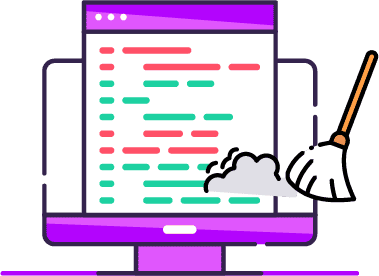
Starting Simple: Clean Data is Your Foundation
Before diving into advanced personalization, let's talk about getting your house in order. The secret to effective email marketing begins with clean, organized data. Start by examining your current email list. Look for inactive subscribers who haven't engaged with your content in the past six months. These dormant contacts aren't just unengaged—they're skewing your metrics and potentially hurting your deliverability.
Consider sending a thoughtful re-engagement campaign to these inactive subscribers. A simple "We miss you" message with a clear call to action can work wonders. Give them an easy way to update their preferences or opt-out entirely. Remember, a smaller, engaged list is far more valuable than a large, unresponsive one.
Crafting Emails That Convert
Let's look at abandonment emails as an example of effective personalization. When a customer shows interest in your products but doesn't purchase, timing and relevance become crucial. The key is crafting an email that feels helpful rather than desperate.
Start with a subject line that references their specific interest – "Those winter boots are calling your name" creates an immediate personal connection. In the body of your email, remind them of what caught their eye, but don't stop there. Showcase similar items that might appeal to their taste, include a range of price points, and build confidence with authentic customer reviews.
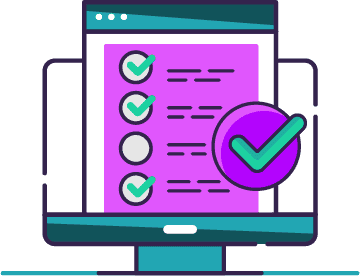
The Power of Post-Purchase Communication
Your relationship with customers doesn't end at the sale—it's just beginning. Create a post-purchase email sequence that adds genuine value. Start with a typical order confirmation, but make it special. Include product care instructions, usage tips, or even creative ways others are using their purchase. A week later, follow up with a personal check-in asking about their experience. This is also the perfect time to share complementary products or services that enhance their purchase.zz

Here are tips on how to start without overwhelming your resources:
- Purchase History Personalization Use a customer's past purchases to create targeted recommendations. A bookstore implemented this by categorizing purchases by genre and reading frequency, then sending personalized reading lists that achieved a 38% conversion rate.
- Engagement-Based Content Adjust email length and content depth based on past engagement. A tech newsletter saw a 45% increase in click-rates by sending shorter, high-level content to low-engagement readers and detailed analysis to highly engaged subscribers.
- Behavioral Trigger Emails Set up emails triggered by specific customer actions. A home goods retailer increased sales by 64% by sending design inspiration emails to customers who browsed but didn't purchase from specific categories.
Measuring What Matters: Focus on these key metrics to gauge your personalization success:
Revenue Impact:
- Track revenue per email recipient
- Measure conversion rate by segment
- Monitor average order value changes
Engagement Quality:
- Time spent reading emails
- Click-through patterns
- Reply rates to personalized content
Looking Ahead
The future of email marketing isn't about more automation—it's about better automation. It's about creating experiences that feel personal and valuable, even at scale. Start with these fundamentals, test consistently, and adjust based on your results.
Ready to transform your email marketing strategy? At Buck Up Studio, we help businesses implement these practices in ways that feel authentic and drive real results. Let's chat about making your email marketing work harder than your morning coffee.
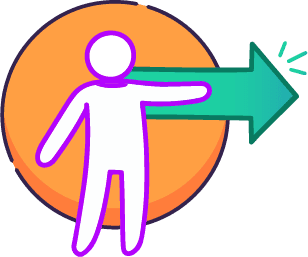
The Buck Up Studio Approach
At Buck Up Studio, we transform email marketing from batch-and-blast to personalized conversations that drive results. We help brands create email experiences that feel more personal than your smartphone's face recognition.
Ready to make your email marketing as personalized as your streaming service recommendations (but actually accurate)? Let's chat about creating email campaigns that your subscribers will actually look forward to receiving.
Remember when posting a "Rise and Grind" quote over a sunset picture was considered peak social media content? (We were so young, so naive!) Now in 2025, your audience can spot empty-calorie content faster than they can close those "Accept Cookies" pop-ups. Let's dive into how to create content that's more satisfying than finding the perfect GIF for your group chat.
The Value-Add Revolution. What Makes Content Actually Valuable?
The days of random posting and praying for engagement are as outdated as trying to make fetch happen. Today's audiences aren't just scrolling—they're seeking content that adds real value to their lives, their businesses, and yes, even their doomscrolling sessions.
The "Save for Later" Factor
If your content isn't being saved faster than winter clothing recipes in summer, it's time for a strategy check. Valuable content is like that one friend who always has the perfect recommendation—useful, reliable, and worth keeping around.

The "Share-Worthy" Standard
Your content should be so good that sharing it makes people feel like they're doing their followers a favor. Think less "look at my lunch" and more "this will change how you work/live/think about cat videos forever."
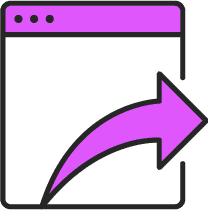
Types of Value-Add Content That Works in 2025
1. Educational content is king!
Mix education with entertainment like you're crafting the perfect playlist—educational enough to teach something new but entertaining enough to keep them coming back for more. Examples:
- How-to content that people bookmark faster than diet plans in January
- Industry insights that don't put people to sleep
- Behind-the-scenes peeks that actually reveal something interesting
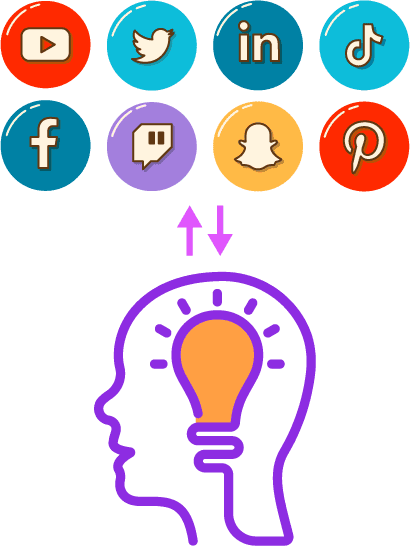

3. Community-Driven Gold
Turn your comment section into a goldmine of shared experiences. Encourage discussions that are more engaging than your cousin's wedding planning group chat. When your audience starts tagging their friends and saying, "This is exactly what we were talking about!" you know you've struck content gold.
- Create content inspired by frequently asked questions
- Facilitate discussions that matter
- Highlight community success stories
2. Problem-Solving Power
Your audience's problems are your content calendar's best friend. Create content that addresses real challenges faster than your plant-based meal kit delivery service solves dinner dilemmas. Whether it's quick tutorials, expert roundups, or step-by-step guides, make your content more useful than that multi-tool gathering dust in your drawer.
- Quick-fix tutorials that actually work
- Expert roundups that offer genuine insights
- Step-by-step guides that don't skip the important parts
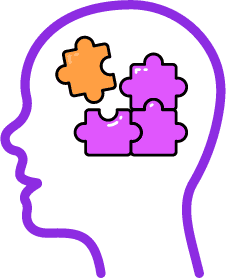
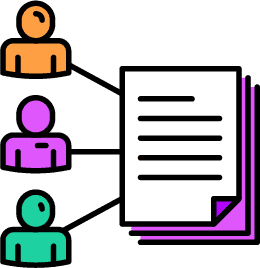
4. Data-Backed Brilliance
Share insights backed by real data—but make it digestible. Think of it as serving statistics with a side story:
- Industry trends broken down into bite-sized pieces
- Case studies that don't put people to sleep
- Research findings translated into human language
The Buck Up Studio Difference
At Buck Up Studio, we don't just talk about value-added content—we create it. We help brands transform their social media presence from "meh" to "more please!" faster than you can say "algorithm change."
Ready to create content that your audience actually wants to see in their feed? Let's chat about making your social media strategy work harder than a coffee maker on Monday morning.

Social Media Strategy: What's Trending in 2025
Remember when we all thought adding filters to our photos was peak social media innovation? Those were simpler times! Now in 2025, social media is transforming quicker than that one friend who keeps changing their profile picture every hour. As your digital partners at Buck Up Studio, we've analyzed the noise to bring you the trends that truly deserve your attention. Let's dive into what's actually worth your precious scrolling time.
1. Short-Form Video Continues to Dominate
Think your attention span is short? Wait till you meet Gen Alpha's! Short-form video isn't just surviving; it's thriving harder than succulents in a millennial's apartment. Brands are now masters at telling stories faster than you can say, "TikTok made me buy it."
What makes it work:
- Higher engagement rates than traditional long-form content, with average view rates up 60% year over year
- Quick, impactful storytelling that captures attention in seconds
- Perfect for behind-the-scenes glimpses, product demos, and brand personality


2. The Rise of Micro -Communities
Forget going viral – it's all about going valuable. Micro-communities are the cool kids' table of 2025, except everyone's invited (as long as they share your obscure interest in vintage calculator watches or artisanal pet rocks).
Why they matter:
- Stronger brand loyalty through community building
- Higher engagement rates than broad audience targeting
- More meaningful customer relationships
- Better conversion rates for niche products/services
3. Value-Add Content That Benefits Your Audience
Gone are the days when posting a motivational quote over a sunset picture counted as meaningful content (sorry, not sorry). In 2025, your audience can spot empty calories content faster than they can identify AI-generated images of cats wearing top hats.
The secret sauce? Creating content that your audience actually wants to save, share, and come back to – you know, like that one recipe video you've bookmarked but never actually made. Focus on:
- Resource guides worth bookmarking (and actually using)
- Educational content that solves real problems
- Industry insights that give your audience a competitive edge
- Actionable tips they can implement immediately
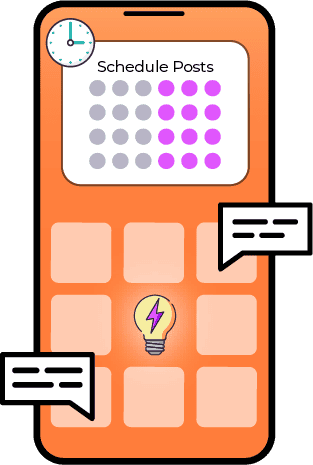
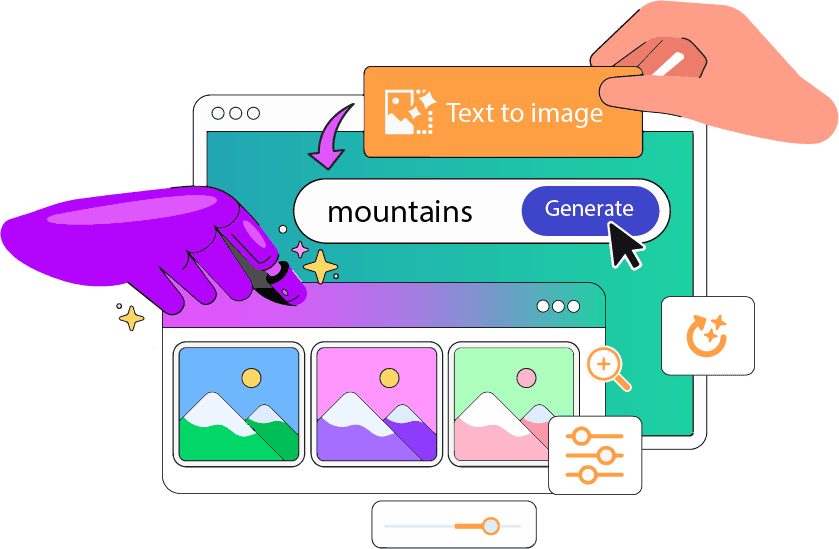
4. AI-Powered Content Personalization Takes Center Stage
Gone are the days when "personalization" meant slapping someone's first name on an email. Today's AI is so smart, it knows what content you want before you do – kind of like that friend who always orders the perfect takeout for movie night. Brands are now using AI to create content so tailored, it feels like your social feed is reading your mind (in a cool way, not a creepy way).
Real-world applications:
- Dynamic content adaptation based on user behavior
- Predictive analytics for content scheduling
- Automated A/B testing for optimal engagement
- Personalized content recommendations that actually make sense
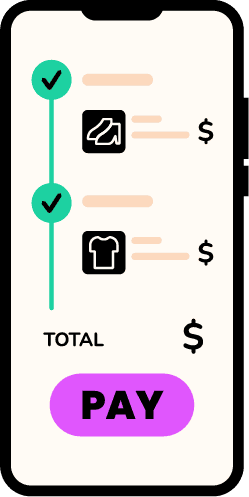
5. Immersive Social Shopping Experiences
Shopping on social media has become so seamless, you might accidentally buy a couch while liking your friend's pet photos. Today's platforms offer virtual try-ons, live shopping events, and instant purchases that make the old "swipe up to buy" seem as outdated as dial-up internet.
Key features driving success:
- Interactive product demonstrations Warning: May result in explaining to your partner why you "needed" that smart toaster at 3 AM.
- AR/VR product visualization
- Live shopping events with real-time Q&A
- One-click purchasing within platform
Making These Trends Work for Your Business
The social media landscape changes faster than fashion trends in the metaverse, but that's exactly why you've got us! At Buck Up Studio, we help businesses like yours navigate these trends with strategies that actually work. No more throwing content at the wall and hoping it sticks – we're talking about data-driven decisions with a side of creative genius.
Ready to level up your social media game?
- Visit us at: [Your website URL]
- Email: [Your email]
- Call: [Your phone number]
- Follow us: [Social media handles]
Let's make your social media presence work harder than a coffee maker on Monday morning. Contact Buck Up Studio today – we promise to reply faster than your teenager responds to text messages (and with much more enthusiasm)!

Hey, digital warriors! Ready to transform your website from a basic digital business card into a show-stopping brand superhero? Buckle up, because we're about to dive into the most epic website-style battle of 2025! Let's find out which design superpower will make your brand absolutely unstoppable!
Minimalism: The Stealth Ninja of Design
Picture this: your website as a zen master, wielding the power of simplicity like a digital katana! Modern minimalism isn't just rocking the "less is more" vibe anymore—it's evolved into something way cooler. Just look at Calm's website—they're not just clearing digital clutter; they're creating digital sanctuaries that make users feel like they've just entered a high-tech meditation chamber!
Super Success Story: When Notion unleashed their minimalist makeover, their user engagement skyrocketed by 40%! Why? Because they turned complexity into simplicity faster than a speeding bullet! POW!
Key characteristics:
- Lots of white space, limited color palettes, simple typography, and essential content only. Think of Apple's website as a classic example - clean lines, sparse text, and focused imagery.
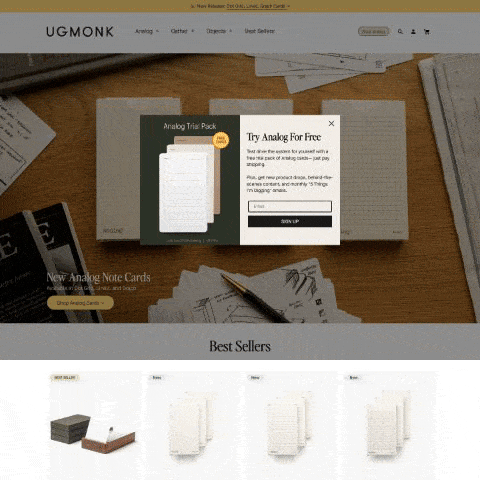

Maximalism: The Explosion of Awesome!
If minimalism is your stealthy ninja, maximalism is your glam-rock superhero wearing a cape made of rainbows! This style doesn't just walk into the room—it BURSTS through the wall like the Kool-Aid Man of web design! Check out Spotify's website—it's like a digital party where every pixel is living its best life!
Super Success Story: Glossier's website proves that maximalism can be your secret weapon! Their bold strategy cranked up their site engagement by 60%! That's what we call a beauty transformation worthy of a superhero origin story!
Key characteristics:
- Bold colors, layered elements, patterns, animations, and rich textures. Often features collage-like compositions and multiple interactive elements. Spotify's Wrapped interfaces often embrace this style.
Brutalism: The Digital Rebel Without a Filter
Forget everything you learned about "pretty" websites—brutalism is here to shake things up like a digital punk rocker! We're talking raw, unfiltered, and totally rebellious design that screams "I make my own rules!" Balenciaga's website is the perfect example—they're not just breaking the luxury website rulebook; they're throwing it out the window and watching it explode!
Super Success Story: PC Music embraced their inner design rebel and BAM! Artist submissions jumped 75%! That's what happens when you dare to be digitally different!
Key characteristics:
- Raw, bare-bones design that often features exposed HTML elements, monospaced fonts, harsh contrasts, and intentionally "undesigned" appearances. The early Bloomberg Business website was a famous example of this style.
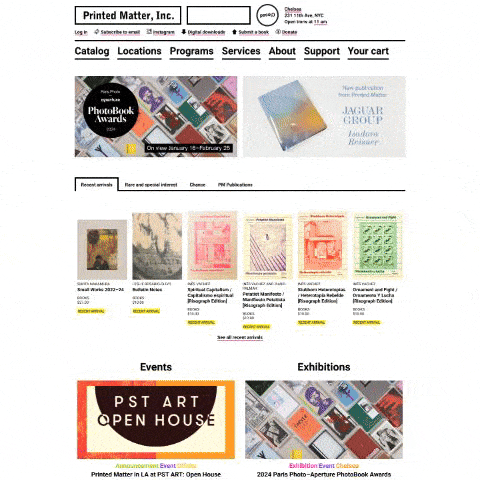
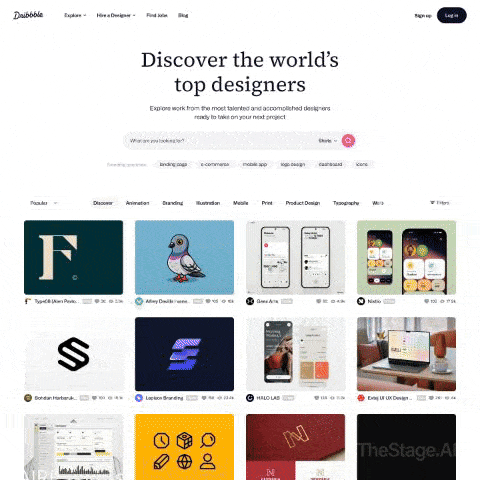
Neo-Morphism: The Smooth Operator of the Future
Imagine if butter could be a website—that's neo-morphism for you! This style is like the James Bond of web design: sophisticated, smooth, and impossibly cool. Apple's website is crushing it with this style, creating interfaces so sleek you'll want to reach out and touch your screen (go ahead, we won't judge!).
Super Success Story: When Revolut suited up with neo-morphism, trust metrics shot up 25%! Now that's what we call a financial glow-up!
Key characteristic:
A modern take on skeuomorphism, featuring soft, realistic-looking UI elements that appear to extrude from or be pressed into the background. Uses subtle shadows and highlights to create a physical, tactile feel while maintaining a modern aesthetic.
Finding Your Design Superpower
Time to suit up and choose your style! Here's your superhero selection guide:
1.
What's Your Brand's Secret Identity? Are you the rebellious Tony Stark or the sophisticated Bruce Wayne of your industry? Your website should be your digital costume—make it count!
2.
Know Your Superfans: Different crowds dig different vibes! Gen Z? They're all about that bold, experimental energy! Corporate clients? They might prefer their websites like their coffee—smooth and sophisticated!
3.
Mission Objectives: What's your website's superpower meant to achieve? Quick conversions? Minimalism might be your sidekick. Content showcase? Maximalism could be your ultimate weapon!
4.
Industry Intel: Sometimes you gotta play by the rules, but remember—even Superman started as a rebel in tights!
The Epic Conclusion
Plot twist: there's no single winner in this style showdown! The real champion is the website that rocks its chosen style with the confidence of a superhero landing! Whether you go minimal or maximal, brutal or neo-morphic, own it like you're the main character in your brand's origin story!
Remember: trends come and go faster than a speeding bullet, but authenticity? That's your real superpower! So grab your design cape, choose your style, and get ready to make the internet a more awesome place!
Ready to level up your digital presence? Your website transformation adventure awaits! Let's make your brand the hero it was always meant to be!

Ready to transform your LinkedIn game from "just another face in the crowd" to "who is THAT professional"? Let's face it—your headshot is your digital handshake, and in 2025, it's time to make it count!
Why Your Headshot Matters More Than Ever Did you know that profiles with professional headshots get 14x more views than those without? In today's digital-first world, your LinkedIn photo isn't just a picture—it's your personal brand ambassador working 24/7. Whether you're hunting for your dream job, building client relationships, or establishing thought leadership, your headshot is making first impressions before you even say "hello."
Ditch the Dated Vibes! Here is what's hot in 2025!
Gone are the days of stiff poses against boring blue backgrounds! Today's winning headshots blend professionalism with personality.
Company Photo Tips That Pop Coordinating company headshots? Here's how to keep everyone looking fresh and cohesive.
- Create style guidelines that allow for personal expression while maintaining brand consistency
- Schedule photos during peak energy hours (hint: not right after lunch!)
- Offer hair and makeup touch-up services for extra confidence
- Choose locations that reflect your company culture
- Plan for both formal and casual shots to maximize versatility

Quick Pro Tips for Photo Day

Wear solid colors that complement your skin tone

Get a good night's sleep and hydrate or that natural glow

Bring a backup outfit for variety
Ready to Level Up Your Headshot? Our approach combines:
Don’t let a dated headshot hold your career back. At Buck Up Studio, we’re pros at capturing the perfect shot that showcases your authentic professional self. Our clients report an average 30% increase in profile engagement after updating their headshots with us.
Book your session today and get ready to break the internet with your new professional presence! After all, in the digital age, you’re only as good as your headshot—make it legendary!
- 1. Pre-shoot consultations to understand your brand goals
- 2. Expert guidance on wardrobe and color psychology
- 3. State-of-the-art lighting techniques
- 4. Multiple poses and expressions to find your perfect angle
- 5. Professional retouching that enhances without looking artificial

Game Over, Open Houses! Why Virtual Tours Are the New Real Estate Rockstars of 2025! Hold onto your house keys, property pros! 🏠 The real estate scene is leveling up, and virtual tours are the headliners! Want to know something mind-blowing? A whopping 90% of buyers are more likely to swipe right on properties with virtual tours. Yeah, you read that right! 🤯
Thinking traditional open houses are still the MVPs? Plot twist: They're as outdated as fax machines! We're talking about a full-on real estate revolution, folks!
The Rise of Virtual Real Estate Tours: A Buyers Dream
Virtual tours are winning hearts by offering 24/7 access to properties, letting buyers tour homes to check layouts, design elements, and the overall appeal from the comfort of their couch. No more weekend rushing; explore at your own pace in your own space. This is a game-changer for busy professionals and international buyers alike!

Turn Time and Cost Savings into Wins
Save time, cash, and the hassle of countless open houses. Virtual tours let you pinpoint the perfect property without leaving home. Quick comparisons and detailed inspections make decision-making a breeze, helping you lock in that dream home faster.

You save on travel costs for original property viewings

You waste less time on properties that don't fit by checking them online first

You can compare multiple properties at once
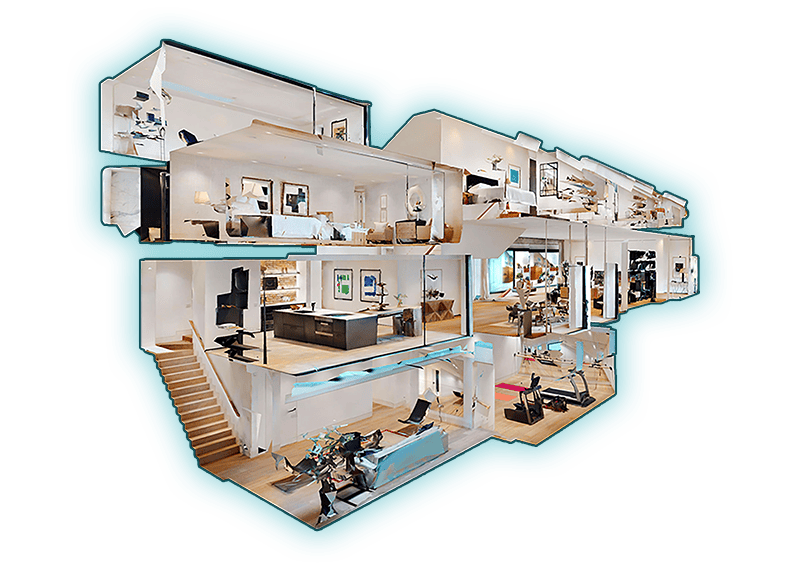
Sellers Rejoice: More Eyes, More Qualified Leads
Sellers, get ready to widen your reach globally! Your property gets a star-studded showcase, bringing in more interest from serious buyers. Virtual tours mean less tire-kicking and more investment-worthy leads, cutting down needless viewings and upping your sales game.
Wider reach to potential buyers beyond local markets and attracts interest from:
- Relocating professionals from different states
- Busy executives with limited viewing time
- Buyers with mobility or health restrictions
Making the Switch to Virtual Tours? Don't Sweat it; Buck Up Studio has you covered!
Dive into the digital future with Buck Up Studio’s cutting-edge virtual tour solutions. We’ve got the tools and tricks to transform listings into immersive experiences. From hi-res cameras to snappy software, we set you up for success with:
- Advanced 3D Imaging: Our Matterport Pro 2 camera delivers hi-res, detailed captures of every property, creating an immersive experience for prospective buyers.
- Engaging Virtual Tours: With our tech, potential buyers can explore properties from every angle, feeling like they're truly there.
- Comprehensive Solutions: Our user-friendly software seamlessly integrates with any listing, enhancing engagement and giving your properties the competitive edge.

When 76% of marketers say they've changed their strategy in the last year, one thing becomes crystal clear: marketing isn't just evolving—it's transforming at warp speed. What worked yesterday might not work tomorrow, but that's exactly where your opportunity lies. While your competitors are scrambling to solve today's challenges, you can build a marketing strategy that's ready for tomorrow.
The State of Marketing in 2025
(Icon: Trending-Up)
The marketing landscape of 2025 demands more than just digital presence—it requires digital intelligence. With only 23% of marketers confident about tracking the right KPIs, there's a massive opportunity for businesses that can master the metrics that matter. Success depends on building a comprehensive marketing strategy that combines analytical insights with emerging technologies.
1. Conducting a Strategic Marketing Audit
Think of a marketing audit as your business's annual health check-up—it reveals what's working, what isn't, and where you need to focus your attention. This isn't just about collecting data; it's about gaining insights that drive results. A thorough audit helps you navigate the complex marketing landscape while staying ahead of industry trends.
Essential Components of Your Marketing Audit:
- Strategic Planning and SWOT Analysis
- Competitive Market Position Assessment
- Marketing Metrics Deep Dive
- Channel Performance Evaluation
- Customer Journey Analysis
marketing audit is not a one-time task. Regular audits help you be proactive with market changes. Systematic analysis of marketing efforts reveals gaps and opportunities your competitors might overlook. This approach will give you a marketing strategy that matches your business goals and maximizes your marketing investment returns.
2. Building Your Data-Driven Framework
(Icon: Database)
Data isn't just numbers—it's the story of your customers told through their interactions with your brand. Companies that successfully unify their data report an 89% increase in sales, proving that a solid data foundation isn't just nice to have—it's essential for survival.
Core Elements of Your Data Framework:
- Customer Data Platform (CDP) Implementation
- Privacy-Compliant Personalization Strategy
- First-Party Data Infrastructure
- Performance Measurement Metrics
- Real-Time Analytics Capabilities
3. Implementing Advanced Marketing Technologies
(Icon: Cpu)
The digital revolution waits for no one. Companies using AI-powered marketing tools are seeing twice the recognition from engaged visitors, while 60% of marketers worldwide now leverage automation in their email programs. Your success in 2025 depends on choosing and implementing the right technologies today.
Essential Marketing Tech Stack Components:
- AI-Powered Analytics Platforms
- Privacy-First Identity Resolution Tools
- Customer Data Platforms (CDPs)
- No-Code Marketing Analytics Solutions
- Advanced Automation Tools
4. Privacy-First Personalization
(Icon: Shield)
Modern marketing walks a delicate line between personalization and privacy. With 47% of consumers preferring brands that deliver tailored experiences and 44% ready to abandon companies after data breaches, finding this balance is crucial. Your strategy must prioritize both personalized experiences and robust data protection.
Key Privacy Considerations:
- Transparent Data Collection Practices
- Strong Authentication Mechanisms
- Secure Data Storage Solutions
- Ethical Data Usage Policies
- Regular Security Audits
5. Future-Proofing Your Strategy
(Icon: Target)
Creating a strategy that stands the test of time requires more than just following current trends—it demands a framework that can evolve with your business and adapt to new challenges.
Essential Elements for Long-Term Success:
- Regular Strategy Reviews and Updates
- Flexible Technology Infrastructure
- Continuous Learning and Development
- Adaptable Marketing Frameworks
- Performance Monitoring Systems
Common Marketing Strategy Pitfalls to Avoid
(Icon: AlertTriangle)
- 🚫 Ignoring data quality issues
- 🚫 Over-relying on third-party data
- 🚫 Neglecting privacy concerns
- 🚫 Following trends blindly
- 🚫 Postponing technology adoption
Measuring Success: Key Performance Indicators
(Icon: LineChart)
Your marketing strategy needs clear metrics for success. Focus on:
- Brand Awareness Metrics
- Engagement Rates
- Conversion Statistics
- Customer Lifetime Value
- ROI Measurements
The Path Forward
The marketing landscape of 2025 demands a strategy that's both robust and flexible. Success requires:
- Regular strategic audits
- Data-driven decision making
- Smart technology adoption
- Privacy-first practices
- Continuous adaptation
Ready to build a marketing strategy that works today and tomorrow? Buck Up Studio specializes in creating future-proof marketing frameworks that drive results. Let's craft your path to success together.
Contact Buck Up Studio Today → Let's build your future-proof marketing strategy!
Building Your Data-Driven Marketing Framework
Data forms the foundation of every successful marketing strategy. A framework that delivers results starts with data unification—creating a single source of truth for all your marketing efforts. Companies that successfully unify their data report an impressive 89% increase in sales.
Your analytical marketing framework needs these key components:
- Customer Data Platform (CDP) implementation
- Privacy-compliant personalization strategy
- First-party data infrastructure
- Performance measurement metrics
- Immediate analytics capabilities
The modern market demands personalization as a necessity, not just an option. 47% of consumers prefer brands that deliver tailored experiences. With increasing privacy regulations and the phase-out of third-party cookies, building a strong first-party data strategy becomes crucial.
A Marketing Performance Management (MPM) system helps measure your framework's effectiveness and arranges your metrics with corporate strategy and outcomes. This system tracks performance in dimensions of all types, from pipeline health to customer value metrics.
Data quality and completeness should be your priority—even the most sophisticated AI tools need clean, complete data to deliver accurate results. A solid data foundation today will help you use advanced analytics and AI-powered decision-making tools as they evolve toward 2025.
Implementing Advanced Marketing Technologies
The fast-changing digital world demands the right marketing technologies for success. Companies using AI-powered marketing tools experience double the recognition of engaged visitors.
Your marketing technology stack should prioritize these essential components:
- AI-powered analytics and automation platforms
- Privacy-first identity resolution tools
- Customer Data Platforms (CDPs)
- No-code marketing analytics solutions
- Advanced automation tools
Privacy-first personalization has become mandatory. Smart marketers now adopt transparent and ethical data practices while delivering customized experiences. This shift is significant because 44% of consumers would cease doing business with companies that experience data breaches.
Marketing automation platforms that enable campaign execution across multiple channels maximize ROI effectively. These platforms help businesses automate ad scheduling and analyze performance. Nearly 60% of marketers worldwide now use automation in their email programs.
Generative AI's integration into your marketing stack goes beyond content creation and changes how you approach customer engagement. AI-powered software solutions streamline planning, execution, and analysis of marketing activities. Predictive analytics tools help forecast customer behaviors and needs.
Data security must be your priority in MarTech implementation. Strong authentication mechanisms, encryption protocols, and secure data storage practices protect your assets. This integrated approach to technology adoption will keep your marketing efforts effective and secure as we move toward 2025.
Conclusion
Marketing strategies need to evolve at a rapid pace as 2025 approaches. Your success rests on three vital pillars: regular strategic audits, analytical decision-making, and smart technology adoption. These elements combine to build a resilient marketing framework that evolves with your business.
Security and privacy are crucial aspects of your marketing initiatives. Creating individual-specific experiences requires protecting user data and maintaining transparent practices. These practices build trust with your audience.
Keeping up with market changes requires constant learning and strategy refinement. Our newsletter brings you the latest marketing trends and strategies to help your business thrive.
Note that your marketing strategy should adapt to new technologies while maintaining your core business objectives. These changes need implementation today. Regular measurement of their effects and strategy adjustments based on real-life performance data will prove beneficial. This proactive approach helps you create a marketing strategy that delivers results beyond 2025.






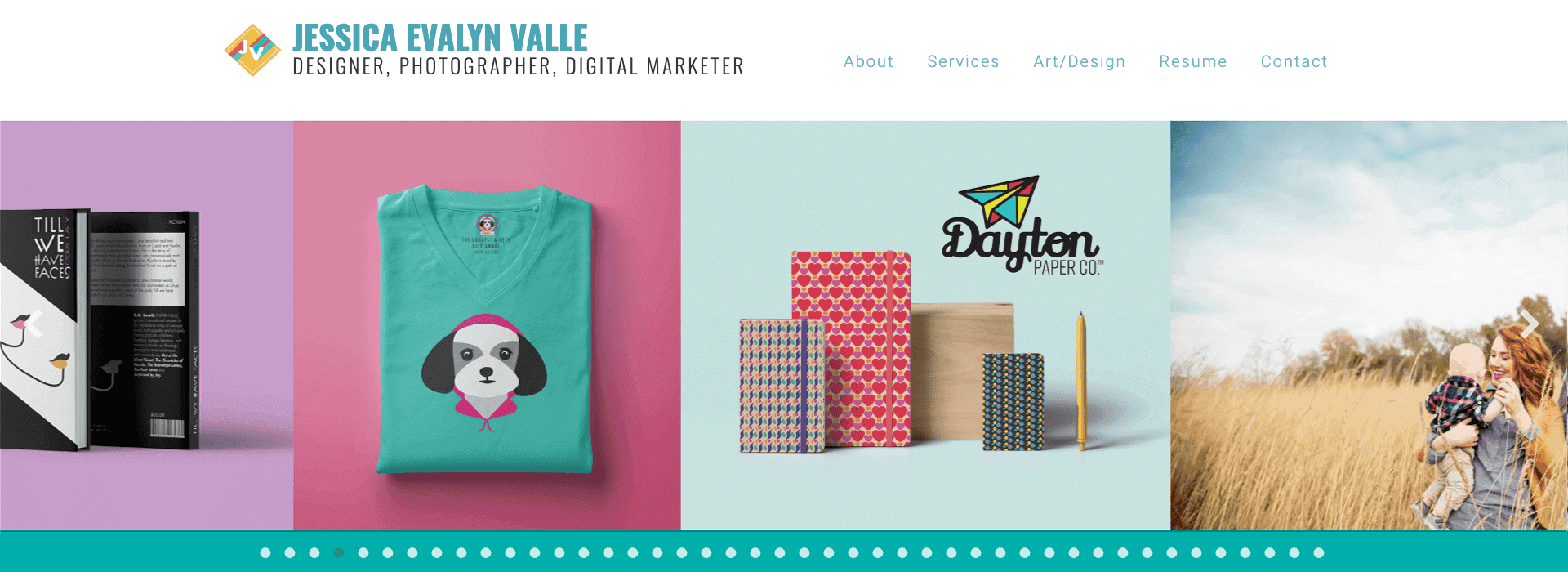
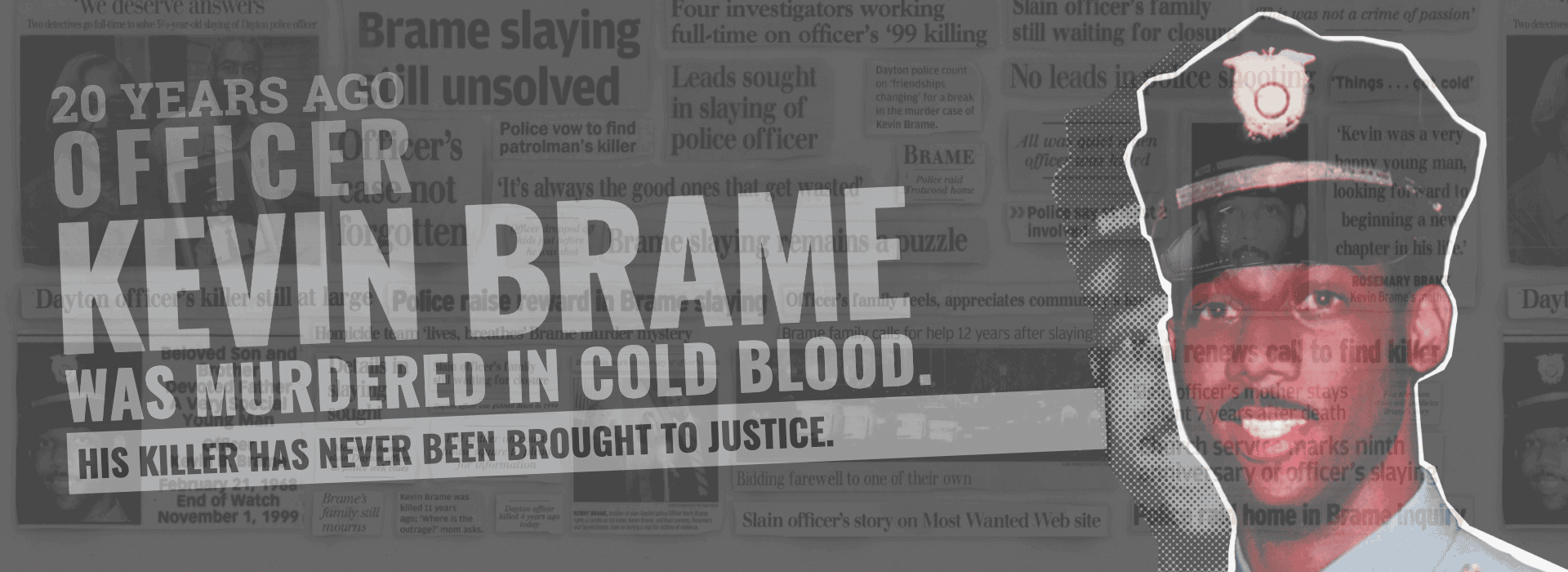
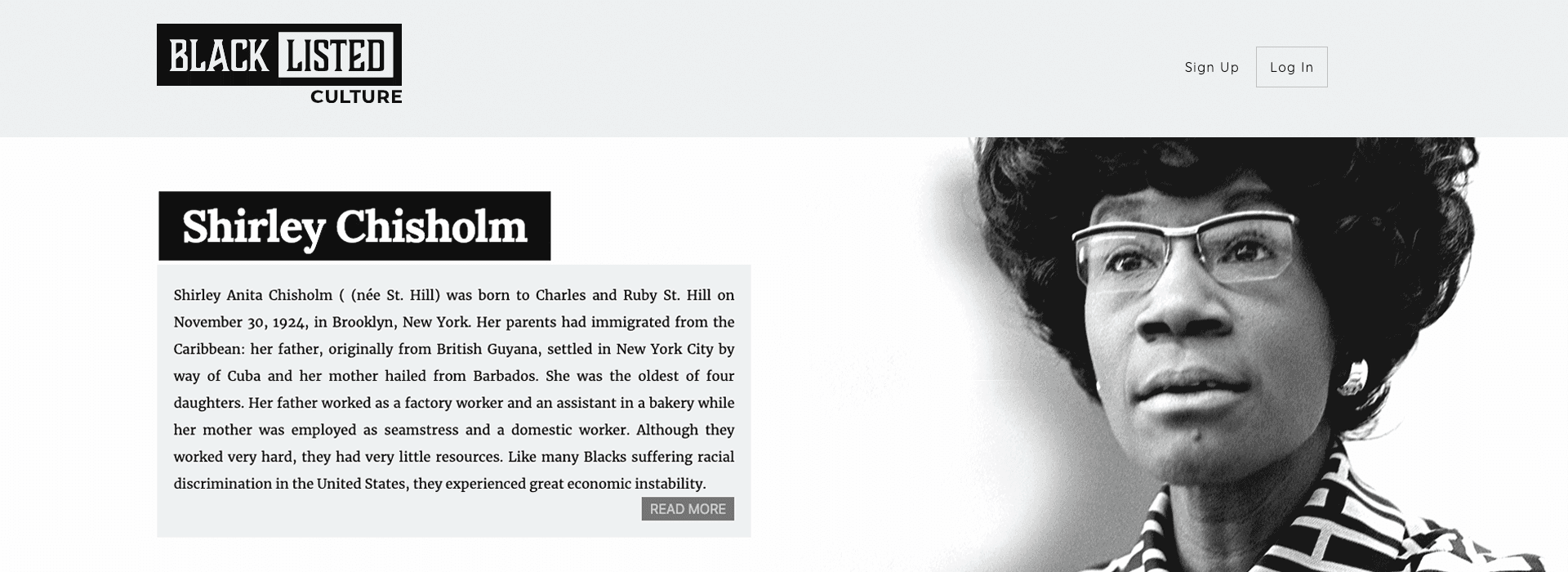

















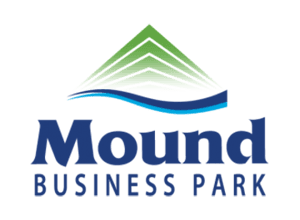



















What Our Clients Say